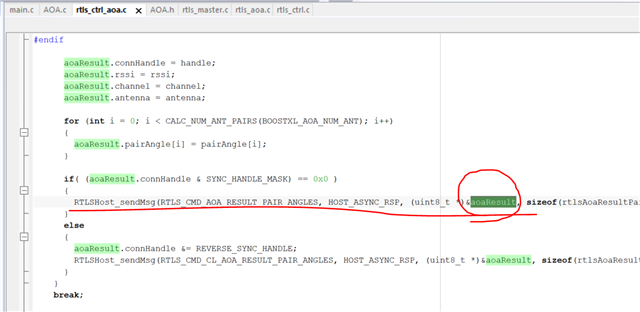Hi team,
Here's the request from the customer:
- Customer went to look at the function AOA_getPairAngles() carefully, and his understanding is as follows: the position of the angle result in the AOA_getPairAngles() function is as shown in the figure below, one of the following two figures is #elif RTLS_MASTER, the other is #ifdef RTLS_PASSIVE, they appear successively, and the variables that finally store the angle value are all on antResult->pairAngle[pair]. If using antResult->pairAngle[pair] to store the angle value, the later data will overwrite the previous data, so how to store the data? Or is his understanding above wrong? If the understanding is wrong, which variable is the specific variable that stores the final angle value?


- As shown in the figure below, TI officials can implement the transmission of the final angle value to the provided page. Which code file is the angle value transmitted through? Which variable is the transmitted angle value stored in and passed out?

Could you help check this case? Thanks.
Best Regards,
Nick




